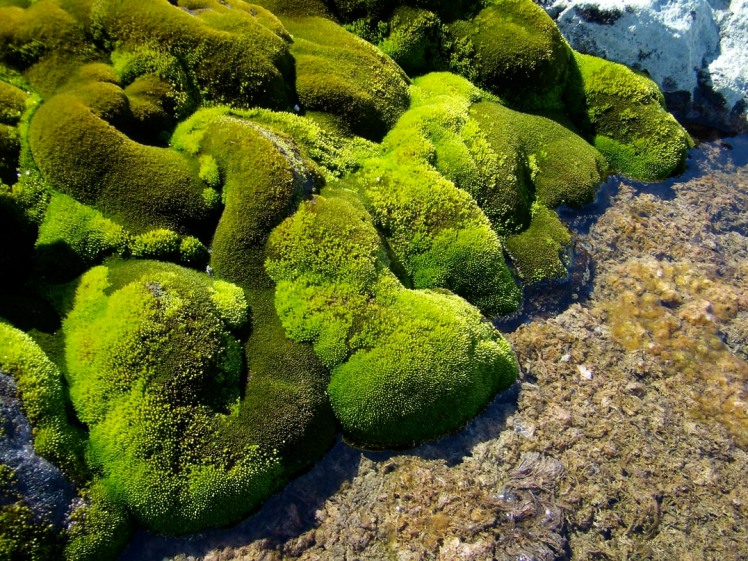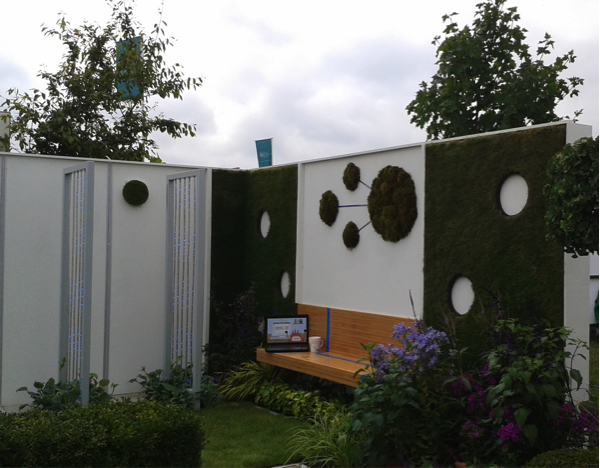This week is a guest post from Juliet Coates and Sharon Robinson. Mosses are a great example of why I started the Quiet Branches. They’re the kinds of plants many wouldn’t notice and don’t realize just how ancient, important, and interesting they are. I have mentioned mosses before in my review of “The Signature of All Things” about a 19th century moss expert. There are a lot of links to more about mosses in this post as well.

Moss – tiny plants, huge potential
Mosses grow everywhere, from Antarctica to Zimbabwe. Because they are small they often go unnoticed, but they feature regularly in the popular press, most recently as a life-saver and for being resurrected after 1500 years. Mosses are tough, ancient, and affect the climate. Whether you are a historian or a climate scientist, mosses have a tale to tell.

Mosses have been useful to human society for thousands of years. They have traditionally been used for wound dressings (as moss has antiseptic properties),building, packing/ storage, and bedding. The 5000-year-old frozen Tyrolean hunter, Otzi, had lots of moss in his clothes, possibly for insulation or for packing his food (also see here). Peat, which is largely the remains of Sphagnum moss, is used for fires and heating, for example, in Scotland. This has the added benefit of adding flavour during the whisky-making process.

Mosses are ancient, first arising half a billion years ago as some of the very first land plants. The appearance of these terrestrial plants eventually enabled descendants of the fish and early vertebrates already present in the sea at this time to move onto land (also see Time tree site). Mosses are tough, and unlike most plants (think of putting a lettuce in your freezer) they can freeze, thaw, and dry out without dying. If you forget to water house-plants, you might want to use some moss to decorate your home.

Mosses uncovered after 400 years due to a retreating glacier on Signy Island in Antarctica were more than 1500 years old. Amazingly, the cells carried on growing in the lab. Antarctic moss growth is so slow that plants are hundreds of years old. They lay down carbon in layers like tree rings and so can be dated accurately. Ancient moss forests like these are indicators of climate change. Antarctic moss responds to changes in its climate by laying down different chemical signatures and thus can be used to track temperature- and precipitation changes over millennia (See this paper too). Some Antarctic mosses produce sunscreens which can also be used to monitor climate, showing how UV radiation levels have changed over time and space as the ozone layer has been depleted.

Mosses also monitor pollution. Mosses can track heavy metal pollution in the European Alps while moss in South America showed historians that metalworking in South America has been going on for 4200 years.

However, mosses may also become an environmental hazard. Permafrost (composed of frozen moss, grass and soil) in the Arctic and Siberia is thawing, allowing moss to thaw and decay, releasing methane and carbon dioxide into the atmosphere and perhaps accelerating climate change (For more see here).
Some mosses may in turn capitalise on environmental change. Mosses can rapidly colonise newly-exposed land in Earth’s polar regions, the sides of volcanoes, or even the space between new paving stones or roof tiles on houses.

Biologists study mosses for many important reasons. A moss genome has been sequenced meaning that we know the identity of every gene that makes up a moss plant. Moss genes help us understand land plant evolution. They can tell us how plants moved onto land from the water half a billion years ago, and coped with new stresses such as UV radiation and desiccation. These stress-tolerance mechanisms have been largely lost in today’s crop plants except for in their seeds
Mosses are tiny because they don’t make the reinforcing compound (lignin) that lets trees and other plants grow tall. This means that they could be a new source of easy-to-produce biofuel. Mosses can be grown in large quantities in bioreactors and can potentially be used as bioreactors themselves to produce useful compounds such as pharmaceuticals.
Moss shows that plants have been manipulating animal behaviour for a long time. Like flowers, mosses can go to a lot of trouble to have sex. They send out special chemicals to attract fungi. The fungi, which grow around the base of the moss, are attractive food for tiny invertebrates Whilst eating fungi these creatures pick up moss sperm which they then move from one moss plant to another allowing reproduction to occur. This is very similar to the way in which flowers produce nectar to reward the insects who move their pollen.
Finally, mosses have even been sent into space. There was a moss experiment aboard the Space Shuttle Columbia in February 2003 when the shuttle was destroyed upon reentry, killing all seven astronauts on board. But the moss survived allowing scientists to determine how plants grow without gravity.
Hopefully all this information about mosses will make you look more carefully at the stuff you see under trees, and in the cracks in walls. Maybe you will think twice before you try to kill when it is in your driveway or your lawn!
Juliet Coates is a plant scientist and molecular geneticist who has been researching plant development and evolution for 14 years. Her current projects include defining new gene networks that regulate spore germination in moss, understanding the regulation of root branching in flowering plants (including crops), and uncovering new information about plant evolution by comparing algae, mosses and more recently-evolving plants. She is a Senior Lecturer at the University of Birmingham, UK and is on the management committee of the EU “PHYCOMORPH” network of seaweed researchers.
Coates lab site. Twitter: @JulietCCoates Facebook: Coates Lab @ Birmingham department site.
Sharon Robinson is a climate change biologist who has been researching how moss survives and thrives in Antarctica for 19 years. She is particularly interested in how Antarctic mosses are coping with climate change and ozone depletion and what they can tell us about past climate. She is a Professor at the University of Wollongong, New South Wales, Australia and was a Distinguished Visiting Fellow at the Institute of Advanced Studies, University of Birmingham in 2014.
Robinson Lab news blog. Twitter: @Antarcticmoss
Absolutely amazing! Loved to read about these tiny yet powerful and magical plants!
LikeLike